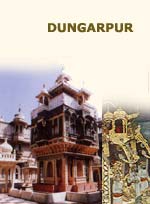 Dungarpur means a ‘Hill Town’ was founded in 1282 A.D. by Rawal Veer Singh, Rawal Veer Singh Dev took over this part of the state from the Bhil Chieftain Dungaria and laid the foundation of the city as well as of the Old Palace on 14th Oct. 1282 AD
Dungarpur means a ‘Hill Town’ was founded in 1282 A.D. by Rawal Veer Singh, Rawal Veer Singh Dev took over this part of the state from the Bhil Chieftain Dungaria and laid the foundation of the city as well as of the Old Palace on 14th Oct. 1282 AD
The district is wild and rugged being situated in the foothills of the Aravallis. The terrain though fairly open in the south and east is interspersed with stony slopes covered with low jungle of cactus, jujube trees and salar (Boswellia Servata, gum producing tree). A variety of shrubs and trees, which require neither a deep soil nor moisture also grow in the area. In the north and the east the country is rugged and wild but towards the south west border the harsh features gradually become softer.
The eastern part of the Gujarat region, slopes down towards the basin of the Mahi river and consists of a plain and a level cultivated area. Two rivers, the Mahi and the Som, flow through the area. The former separates the district from Banswara and the latter forms the natural boundary between this district and Udaipur. The cultivated area is mostly confined to the valley and low ground between the hills where the soil is alluvial.
Dungarpur is famous for its unique style of architecture as seen in its palaces and noble residences. These royal residences are adorned by ‘jharokhas ‘ built in stone in a unique style typical of the area developed during the reign of Maharawal Shiv Singh (1730-1785 A.D.) The district’s gold and silversmiths are renowned for lacquer painted toys and picture framing.
PRIME SITES
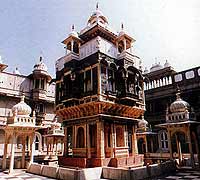 Udai Bilas Palace : The royal residence named after Maharawal Udai Singh II , a patron of art & architecture, the palace is a veritable example of the Rajput architecture ornate with intricately sculptured pillars and panels, impressive balconies, bracketed windows and marvellous arches.
Udai Bilas Palace : The royal residence named after Maharawal Udai Singh II , a patron of art & architecture, the palace is a veritable example of the Rajput architecture ornate with intricately sculptured pillars and panels, impressive balconies, bracketed windows and marvellous arches.
Juna Mahal : The 13th century seven storeyed structure resembling a fortress with crenellated walls, turrets, narrow entrances and corridors to slow down the enemy. The splendid interiors embellished with beautiful frescoes, miniature paintings, glass and mirror work, make it an inpressive creation. addmission is reserved to visit the Palace.
Gaib Sagar Lake : A famous shrine of Shrinathji lies along the lake . The shrine is a conglomeration of several exquisitely built temples with one main temple. The Vijay Raj Rajeshwar Temple dedicated to Lord Shiva is an architectural splendour and a fine example of craftmanship of the shilpis of Dungarpur.
Museum : The museum is fine collection of ancient statues.
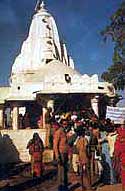 Baneshwar :Baneshwar temple is much revered by the Bhils. Other temples dedicated to Lord Vishnu and Lord Brahma are worth seeing for their exquisitely carved pillars and gateways. This is also the place to be in when the Bhils celebrate their biggest and most important fair-the Baneshwar Fair.
Baneshwar :Baneshwar temple is much revered by the Bhils. Other temples dedicated to Lord Vishnu and Lord Brahma are worth seeing for their exquisitely carved pillars and gateways. This is also the place to be in when the Bhils celebrate their biggest and most important fair-the Baneshwar Fair.
Dedicated to Lord Shiva, this is the largest gathering of the Bhils who collect here from all over, including Gujarat and Madhya Pradesh. A visit to the fair can be great fun as you mingle with the crowds and watch the simple tribal folk enjoying themselves.
Dev Somnath: A splendid 12th century temple dedicated to Lord Shiva built in white stone. It is an exact replica of the original Somnath temple in Gujarat. When the original temple was destroyed several times by the Muslim invaders, devout Hindus decided to create this replica in the interiors so that it would remain safe.
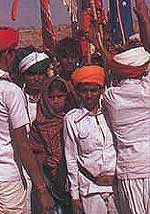
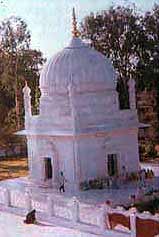 Galiyakot :Once the capital of the Parmar kings but today it is renowned for its magnificent shrine dedicated to Sayed Fakhruddin. Thousands of devotees gather here during the URS. Other important places to see are Baroda, the erstwhile capital of Vagad, where some temples still survive.
Galiyakot :Once the capital of the Parmar kings but today it is renowned for its magnificent shrine dedicated to Sayed Fakhruddin. Thousands of devotees gather here during the URS. Other important places to see are Baroda, the erstwhile capital of Vagad, where some temples still survive.
Bhuvaneshwar: It is a famous temple dedicated to Lord Shiva and colorful fair held on the 5th day after Holi festival every year by Bhil people.